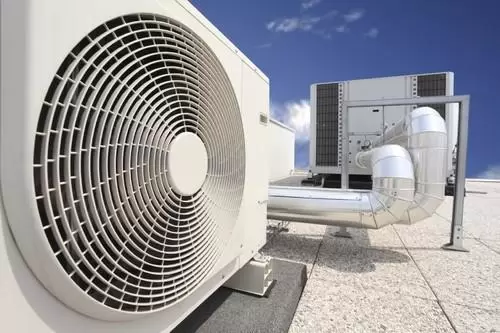Industrial ventilation systems are crucial for maintaining air quality, temperature control, and overall safety in various industrial settings. Proper ventilation ensures that harmful pollutants and excess heat are effectively removed, creating a healthier and more productive work environment. Optimizing the performance of your industrial ventilation system can lead to significant improvements in efficiency, cost savings, and employee well-being. In this guide, we will explore practical tips to enhance the performance of your industrial ventilation system.
Regular Maintenance and Inspections
Routine maintenance and regular inspections are vital for keeping your ventilation system running efficiently. By conducting consistent checks, you can identify and address issues before they become significant problems.
Key components to inspect include fans, ducts, filters, and control systems. Ensure that fans are clean and free of debris, as buildup can reduce efficiency and airflow. Check ducts for leaks or obstructions that might impede air movement. Filters should be cleaned or replaced regularly to maintain optimal air quality and system performance.
Common issues to look out for include unusual noises, reduced airflow, and increased energy consumption. If these problems are addressed promptly, they can be prevented from becoming more extensive and requiring more costly repairs in the future.
Upgrading and Modernising Equipment
Investing in modern, energy-efficient equipment can significantly boost the performance of your industrial ventilation system. Upgrading outdated components can enhance efficiency, reduce energy consumption, and improve overall system reliability.
One critical aspect of upgrading is choosing a fan blade design that suits your specific ventilation needs. Modern fan blades are designed to maximize airflow while minimizing energy use and noise. Look for features like aerodynamic shapes and lightweight materials that enhance performance.
Signs that it’s time to upgrade your ventilation system include frequent breakdowns, rising energy bills, and inadequate airflow. New technologies and innovations in ventilation, such as high-efficiency fans, advanced control systems, and smart sensors, can provide substantial performance improvements.

Optimising Airflow and Distribution
Proper airflow and distribution are essential for an effective ventilation system. Ensuring that air is evenly distributed throughout your facility can prevent hotspots and improve air quality.
To achieve balanced and efficient airflow, consider the layout of your ventilation system. Positioning fans and vents strategically can help maintain consistent air movement. Air balancing techniques, such as adjusting dampers and fan speeds, can also optimize airflow.
Using tools like anemometers to measure air velocity and pressure can help you fine-tune your system. Regularly reviewing and adjusting your setup ensures that your ventilation system continues to operate at peak performance.
Energy Efficiency Improvements
Reducing energy consumption in your industrial ventilation system not only lowers operational costs but also minimizes environmental impact. Implementing energy-efficient strategies can lead to significant savings.
Variable speed drives (VSDs) and energy-efficient motors are excellent additions to your system. VSDs allow fans to operate at different speeds based on demand, reducing energy use during low-demand periods. Energy-efficient motors consume less electricity, leading to lower utility bills.
Sealing ducts and insulating them can prevent leaks and reduce the load on your system. Proper insulation helps maintain desired temperatures and minimizes energy wastage.
Using Advanced Controls and Automation
Advanced control systems and automation can greatly enhance the performance and efficiency of your industrial ventilation system. Automated controls can adjust system parameters in real time, ensuring optimal operation under varying conditions.
Benefits of automated control systems include improved energy efficiency, consistent airflow, and reduced manual intervention. Technologies such as programmable logic controllers (PLCs) and building management systems (BMS) can integrate various components of your ventilation system, providing centralized control and monitoring.
Examples of control technologies include sensors that monitor air quality, temperature, and humidity. These sensors can trigger automatic adjustments to fan speeds and damper positions, maintaining optimal conditions without manual intervention.
Monitoring and Measuring Performance
Continuous monitoring and data collection are essential for maintaining and improving the performance of your ventilation system. By regularly measuring key performance indicators, you can identify areas for improvement and make informed decisions.
Tools and technologies for measuring ventilation performance include airflow meters, pressure gauges, and temperature sensors. These devices provide real-time data that can be used to optimize system settings.
Analyzing collected data allows you to spot trends and identify potential issues before they escalate. Implementing a proactive maintenance strategy based on data insights can prevent unexpected downtime and enhance system reliability.
Training and Education for Staff
Well-trained staff are crucial for the effective operation and maintenance of your industrial ventilation system. Providing ongoing education and training ensures that your team is equipped with the knowledge and skills needed to manage the system efficiently.
Resources for ongoing education include manufacturer training programs, industry workshops, and online courses. Encourage your team to stay updated on the latest advancements in ventilation technology and best practices.
Promoting a culture of continuous improvement can lead to sustained performance enhancements. Regularly review and update training programs to keep pace with technological advancements and evolving industry standards.
- Lil Tecca Net Worth Revealed: The Financial Success Behind His Music Career - December 20, 2024
- Exploring Joey Merlino’s Net Worth: Insights into the Life of the Infamous Philadelphia Mafia Boss - December 20, 2024
- Unveiling Nathan Fillion’s Net Worth: How the Star of ‘Firefly’ and ‘The Rookie’ Built His $20 Million Fortun - December 17, 2024

